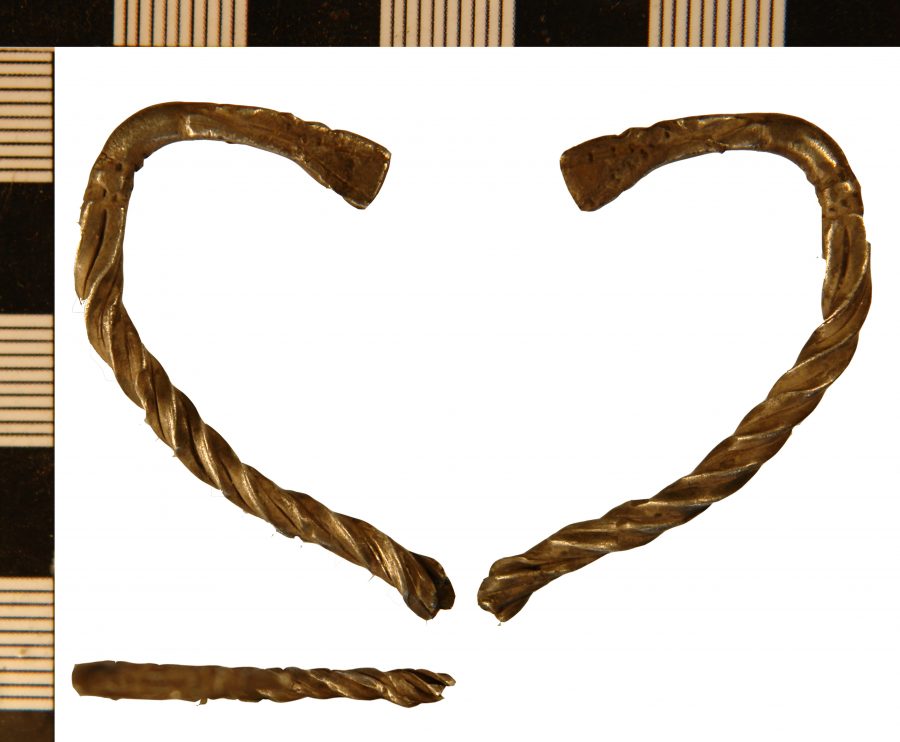
Description
Silver Arm-Ring (NLM-1B89B2)
A silver arm-ring fragment found near Haughton, Nottinghamshire
This arm-ring fragment is made from strands of wire wound together into a single twisted or cabled strand with a cast zoomorphic terminal. This object was considered together with a group of fragments of ingots and hack-silver of probably contemporary date which were found nearby (NLM-1B0476). However, the mass of this object did not correspond closely to any of the systems of measurement thought to have been used for bullion transactions at that time.
The Vikings arriving in England had a bullion economy where they paid for goods with silver that was weighed to an amount agreed between the buyer and the seller. Hacksilver and silver ingots are the most common evidence for their bullion economy. It took some time for the Scandinavian settlers to adopt a monetary economy like that of the Anglo-Saxons, and both systems were used simultaneously for a while before they fully adopted the new system. They were familiar with monetary economies but they treated coins as just another form of silver before adoption of a monetary economy
Object Type
- Armring
Date
- circa 850 — 900
Ascribed Culture
Original/Reproduction
- Original
Material
Collection
- Viking Objects
Current Location
- Private Ownership
Keywords
- armring, bullion, Economy, hacksilver, jewellery, Nottinghamshire, Portable_Antiquities_Scheme, silver, trade
Further information
You can see the original at Private Ownership.
Acknowledgements
(c) Portable Antiquities Scheme, CC BY-SA 4.0
References
